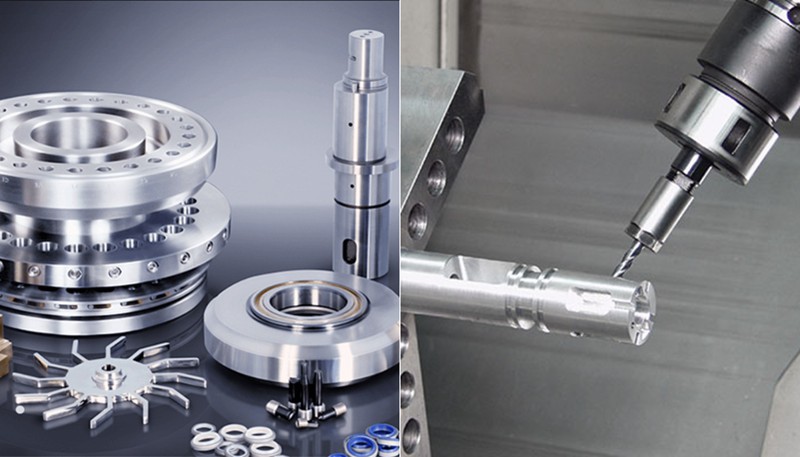Modern vehicles rely on high-precision metal parts to ensure performance, safety, and durability under extreme conditions. The automotive industry has shifted from traditional production methods to advanced technologies, improving efficiency, accuracy, and sustainability. This evolution addresses strict quality standards, environmental regulations, and consumer demands for better, longer-lasting vehicles.
Contents
Traditional Manufacturing Methods and Their Constraints
Automotive manufacturers have long depended on time-tested processes like casting, forging, and metal stamping to create essential components. These methods established the foundation of mass automotive production and continue to play important roles in manufacturing workflows.
Casting Limitations
Traditional casting involves pouring molten metal into molds to create parts like engine blocks, cylinder heads, and transmission housings. While effective for large-scale production, casting faces inherent precision challenges. The cooling process can introduce dimensional variations, and achieving tight tolerances often requires extensive secondary machining operations.
Surface finish quality from casting frequently falls short of modern automotive standards, particularly for components that interface with other precision parts. The porosity that sometimes occurs during solidification can compromise structural integrity, requiring additional quality control measures that slow production timelines.
Forging Constraints
Forging shapes metal through controlled deformation under high pressure, creating parts with excellent strength characteristics. However, achieving complex geometries through forging alone proves challenging, especially for intricate automotive components with internal channels or detailed surface features.
The tooling costs associated with forging can be substantial, making it less economical for smaller production runs or prototype development. Additionally, the material waste generated during the forging process contradicts the industry’s sustainability objectives.
Material and Process Flexibility Issues
These traditional methods often restrict material choices and design flexibility. Casting works well with certain alloys but struggles with others, while forging requires materials with specific deformation characteristics. This limitation can force engineers to compromise on optimal material selection for specific applications.
Advanced Manufacturing Techniques Revolutionizing Production
The automotive industry has embraced sophisticated manufacturing technologies that deliver exceptional precision while addressing the limitations of traditional methods.
CNC Machining Excellence
Computer Numerical Control (CNC) machining has become the cornerstone of high-precision automotive part production. Modern CNC systems can achieve tolerances within micrometers, enabling manufacturers to create components that meet the exact specifications required for optimal vehicle performance.
Advanced CNC machines utilize multiple axes of movement, allowing for complex geometries that would be impossible through conventional methods. Five-axis machining centers can produce intricate parts like turbocharger housings or transmission components in single setups, eliminating the need for multiple operations and reducing accumulated tolerances.
The integration of real-time monitoring systems in CNC operations ensures consistent quality throughout production runs. Adaptive machining technologies automatically adjust cutting parameters based on tool wear and material variations, maintaining precision levels even during extended manufacturing cycles.
Additive Manufacturing Applications
3D printing technology has evolved from prototyping tool to production method for specific automotive applications. Metal additive manufacturing enables the creation of parts with internal cooling channels, lattice structures, and complex geometries that traditional methods cannot achieve.
Selective laser melting and electron beam melting processes can produce components from high-strength alloys, including titanium and Inconel, which are increasingly important for performance and lightweight applications. The layer-by-layer construction process allows for optimal material distribution and can create parts that are both lighter and stronger than traditionally manufactured alternatives.
The ability to produce parts on-demand reduces inventory requirements and enables rapid prototyping of new designs. This flexibility proves particularly valuable for low-volume specialty vehicles or when responding quickly to engineering changes.
Precision Grinding and Finishing
Advanced grinding technologies ensure that machined parts meet the surface finish requirements critical for automotive applications. Centerless grinding produces cylindrical components like valve stems and fuel injector components with exceptional roundness and surface quality.
Electrochemical machining and electrical discharge machining (EDM) enable the production of parts with complex internal features while maintaining precise dimensional control. These processes prove particularly valuable for creating components like fuel injection nozzles, where microscopic precision directly affects engine performance and emissions.
Benefits of High-Precision Manufacturing in Automotive Applications
The shift toward high-precision metal parts delivers measurable improvements across multiple aspects of vehicle performance and manufacturing efficiency.
Enhanced Engine Performance and Efficiency
Precisely manufactured engine components enable optimal combustion chamber geometries and improved sealing between moving parts. Tighter tolerances in piston rings, cylinder walls, and valve train components reduce internal friction and minimize blow-by, directly improving fuel efficiency.
High-precision fuel injection components ensure accurate fuel metering and optimal spray patterns, which enhance combustion efficiency and reduce emissions. The dimensional accuracy of these parts directly correlates with engine performance parameters and environmental compliance.
Improved Safety and Reliability
Critical safety components like brake system parts and steering components require exceptional precision to function reliably under demanding conditions. High-precision manufacturing ensures consistent performance characteristics and predictable failure modes when components reach their service limits.
The improved dimensional consistency of precision parts reduces the variation in assembly processes, leading to more predictable vehicle behavior and enhanced safety margins. This consistency proves particularly important for automated assembly operations where part variation can affect final product quality.
Manufacturing Efficiency Gains
Precision parts often eliminate the need for extensive fitting and adjustment during assembly, reducing labor costs and improving production throughput. Components that meet specifications consistently require less inspection and rework, streamlining quality control processes.
The ability to achieve final dimensions and surface finishes directly from manufacturing processes reduces or eliminates secondary operations. This integration saves time, reduces handling, and minimizes the opportunity for quality issues to develop.
Sustainability Advantages
High-precision manufacturing typically generates less material waste compared to traditional methods that rely on extensive machining to achieve final dimensions. The improved efficiency of precision-manufactured engines and transmissions contributes to reduced vehicle emissions throughout their operational life.
The durability improvements associated with precision parts extend component service life, reducing the frequency of replacement and the associated environmental impact of part production and disposal.
Conclusion
The automotive industry’s focus on electrification, autonomy, and sustainability is increasing demand for advanced precision manufacturing. Innovations like AI, tighter tolerances, and cutting-edge materials are driving efficiency, cutting costs, and enabling the production of high-performance, reliable vehicles.
